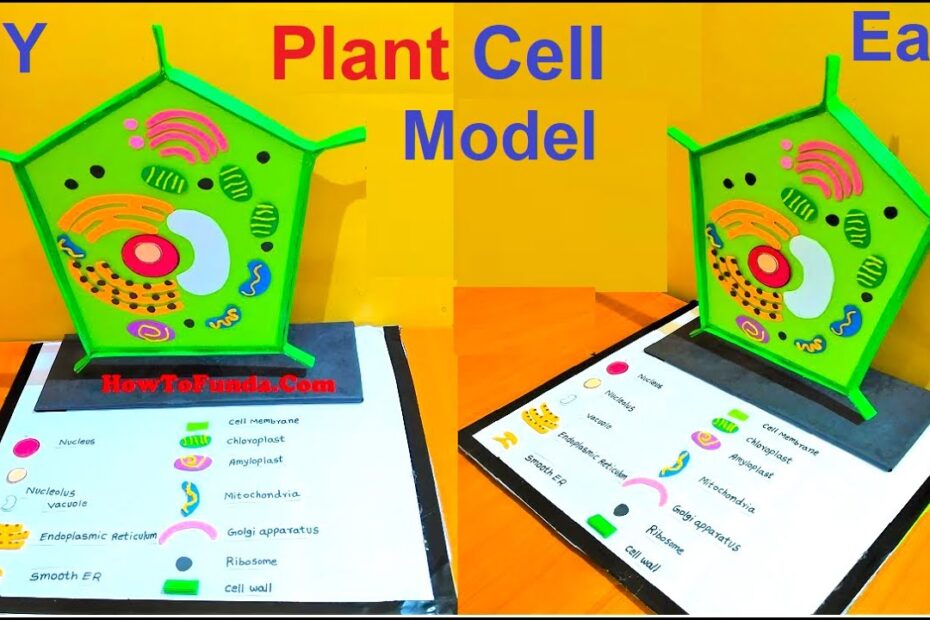What do I need to make a model plant cell?
So, you’ve decided to dive into the world of plant cell modeling—congrats! You’re about to become the Picasso of biology (or at least the person who doesn’t glue their fingers together). To get started, you’ll need a few essentials. Think of it as a shopping list for your inner scientist. First, grab some clay or foam to shape the cell wall and membrane—because every plant cell needs a sturdy home. Next, you’ll need colored paper or markers to jazz up the organelles. And don’t forget the glue—unless you enjoy watching your chloroplasts roll away like tiny green marbles.
Now, let’s talk about the fun part: the details. You’ll need small beads or buttons to represent the nucleus, mitochondria, and other tiny but mighty parts. If you’re feeling fancy, throw in some pipe cleaners for the endoplasmic reticulum—because who doesn’t love a curly organelle? And finally, grab a labeling tool (like stickers or a pen) to make sure your masterpiece is as educational as it is Instagram-worthy. Here’s a quick checklist to keep you on track:
- Clay or foam for the cell structure
- Colored paper or markers for organelle flair
- Glue to keep it all together
- Beads or buttons for the organelles
- Pipe cleaners for that extra pizzazz
- Labeling tool to show off your knowledge
What are the 7 main parts of a plant cell?
Plant cells are like the Swiss Army knives of biology—packed with specialized parts that keep things running smoothly. These tiny powerhouses are more than just green blobs; they’re complex, organized, and downright impressive. Whether you’re a science enthusiast or just here for the trivia, knowing the 7 main parts of a plant cell is like having a backstage pass to the botanical world. Let’s dive in and meet the MVPs of the plant cell squad.
- Cell Wall – The plant’s bodyguard, providing structure and protection.
- Cell Membrane – The bouncer, controlling what goes in and out.
- Nucleus – The brain, calling the shots and storing DNA.
- Chloroplasts – The solar panels, turning sunlight into energy.
- Mitochondria – The power plants, generating energy for the cell.
- Vacuole – The storage unit, holding water and nutrients.
- Cytoplasm – The jelly-like matrix, keeping everything in place.
Each of these parts has a job to do, and they’re all essential for the plant’s survival. The cell wall keeps the plant standing tall, while the chloroplasts work overtime to make food through photosynthesis. Meanwhile, the vacuole is like a giant water bottle, ensuring the plant stays hydrated. Together, these components form a well-oiled machine that keeps plants thriving—and looking fabulous while doing it.
What is a plant cell model?
Ever wondered what a plant cell model is? Well, it’s basically the plant cell’s doppelgänger—a 3D replica that’s less “photosynthesis” and more “look at me, I’m science art!” Whether it’s made of clay, foam, or even edible materials (because why not snack while you learn?), a plant cell model is a hands-on way to explore the tiny green universe inside every plant. It’s like building a LEGO set, but instead of a spaceship, you’re crafting chloroplasts, vacuoles, and cell walls. Who knew science could be this crafty?
Plant cell models aren’t just for show—they’re educational powerhouses. They help students (and curious adults) visualize the complex structures that keep plants alive and thriving. Plus, they’re a great way to impress your biology teacher or win the “Most Creative Science Project” award. Here’s what you’ll typically find in a plant cell model:
- Cell Wall: The plant’s version of a superhero suit—tough and protective.
- Chloroplasts: The solar panels of the plant world, turning sunlight into snacks.
- Vacuole: The storage unit that’s basically a plant’s walk-in closet.
So, if you’ve ever wanted to shrink down and take a tour of a plant cell, a model is the next best thing—minus the shrinking ray, of course.
What are the 10 things in a plant cell?
Ever wondered what makes a plant cell the ultimate multitasker? It’s like a tiny, green factory with a team of specialized workers, each with a unique role. From the cell wall (the plant’s version of a fortress) to the chloroplasts (the solar panels that keep the party going), plant cells are packed with fascinating components. Whether it’s the vacuole acting as the storage unit or the mitochondria powering the show, these 10 things are the unsung heroes of the plant world.
Here’s a quick rundown of the 10 key players in a plant cell:
- Cell Wall – The ultimate bodyguard, keeping everything in place.
- Cell Membrane – The bouncer, deciding who gets in and out.
- Cytoplasm – The jelly-like dance floor where all the action happens.
- Nucleus – The boss, calling all the shots.
- Chloroplasts – The solar-powered chefs, cooking up energy.
- Mitochondria – The power plants, keeping the lights on.
- Vacuole – The storage unit, holding all the essentials.
- Ribosomes – The protein factories, working overtime.
- Endoplasmic Reticulum – The delivery system, transporting goods.
- Golgi Apparatus – The packaging department, wrapping things up neatly.
Each of these components plays a vital role, making plant cells the ultimate team players in the botanical world.
